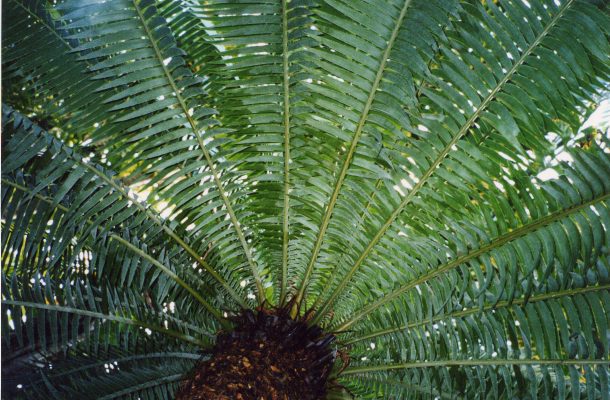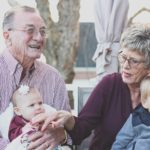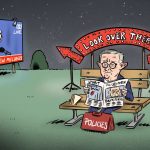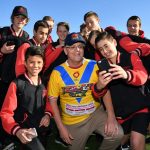The more you know, the less you need

How accurate are the memories of a culture that does not have a written language?
We have been brought up in a culture which prizes the written word and a science which can be proved and discussed for generations. We have been taught, via the concept of ‘Chinese whispering’ that ideas transmitted solely by word of mouth are subject to rapid degradation.
The Australian aborigines do not have a written language as we understand the term but remember via word of mouth, songs, dance, rituals, sand pictures, rock-art and the features of the land around them.
I watched a David Attenbourgh film of the Great Barrier Reef a while back. The boat he was in had state of the art electronics which showed him the sea bed, especially the area which was above the sea some twenty odd thousand years ago.
When he went ashore he met an aboriginal elder and, being D.A. started talking about his new knowledge. The elder not only knew the area but was able to point out a few more details remembered from that time which were later proved to be accurate.
During my more active phase I travelled around Australia with a tent and later with a caravan. One consistent aspect of these travels was that we kept meeting aboriginals who not only had a deep understanding of their history and environment, but who also were willing to communicate it with others – plants, animals, rivers, stars and the land itself.
Some of this information was beyond my grasp because it involved spiritual ideas I was unfamiliar with. At one stage I helped a group of youths with a communication problem involving the internet. In return they made me a member of their group, calling me a ‘white-feller black-feller’ which made me both proud and humble. I was able to learn a lot from that mob.
The basis of their understanding seems to be the concept of the land and their place in it. Rocks, trees, hills and watering places have a deep significance which blends in with their overall culture.
Time means little to a bush aboriginal – he can sit and contemplate for hours at a stretch, yet when making a hot drink, will heat it up to optimal temperature for drinking and drink it, whereas a European will heat it to boiling, then sit around talking while it cools off enough.
An aboriginal will sit on the ground to make maximum contact while a European will squat on his haunches. The physical contact with Mother Earth is important for the bush aboriginal.
When travelling, the aboriginal will initially use the environmental pointers to give direction and then rely on the stars and the maps he has learned during initiation which show waterholes, animal concentrations, landmarks and previous journeys of the tribe.
I have been informed that in theory an aboriginal could transverse this country safely solely with the knowledge he was given at his initiation. However, this would involve communicating with other tribes which is not always practicable.
So, what is science? To a European it is the knowledge gathered over generations, discussed, exchanged, contemplated and accepted. To an aboriginal, it is the Earth, country in an ever-changing environment as it is now but with reference to how it is changing and how we can adapt to those changes while living with it, not forcing our way of thinking on it.
Many plants in Australia contain high levels of cyanide (CN), often in the form of cycasin (C8H16N2O7) and this is why most poisons against introduced pests have this as a base – the native fauna have built up a resistance to it. Humans have little resistance and have developed ways of overcoming the effects.
The fruit of the cycad Macrozamia was exploited as an important food source in spite of its being highly toxic and carcinogenic. The Aboriginal People had developed methods of removing the toxins that allowed the cycad seeds to become a rich food source. Different groups had different methods of removing the toxins, but they all achieved the same end, an edible, sustaining, fruit.
In one method the kernels are cut open and the toxins are leached out in water. When the process had been completed the kernels were ground into a powder like flower and backed to make cycad bread.
Other people used a method involving fermentation, leaving the kernels in large containers, or in some cases pits, where they remained for several months. They process is complete when the kernels have frothed or become mouldy.
However processed, the toxin-free cycad seeds are a rich food source, and they are produced in large numbers on each plant. It has been estimated that cycads can produce more food per hectare than many cultivated crops.
The increase in area and productivity of cycads is an example of why the Aboriginal People could be called fire-stick farmers, not simply hunter gatherers, they used fire to remove competing plants from around the cycad stands.
In fact, the cycad stands were not natural, they are an agricultural crop, though they weren’t recognised as such until recent times. The Aboriginal People had learned that by regular burning of the area around the stands they increased the production of seeds much above the natural level.
Burning could also be used to produce a heavy crop that ripened at the same time so they could be used as food source for the large gatherings at time of big ceremonial events, when a number of groups came together.
Cycads were used in this manner, providing food for large gatherings of hundreds of people at ceremonies that could continue for weeks or months, in Arnhem Land and the Carnarvon Ranges.
The processing of macrozamia has apparently been known of since at least the late Pleistocene, evidence of processing having been found at a number of archaeological sites.
Among the sites where evidence of exploitation of Macrozamia has been found are the Carnarvon Ranges, dated to 4000 years ago, Native Well I and II, dated to 10,000 years ago, Jiyer Cave in the north Queensland rainforest, dated to about 4000 years ago.
Evidence has been found at Cheetup Shelter, near Esperance in Western Australia, that cycad seeds were being detoxified in pits lined with grass-tree leaves in the Late Pleistocene. It has been suggested that the process of detoxifying the seeds may have developed independently in a number of areas, based on the fact that more than one process was used.
In the Blue Mountains area, at sites such as Noola and Capertree III, there was an increase in use from between 3000 and 4000 years ago, associated with the use of cycad seeds and the small tool tradition. The same is seen in the Carnarvon Ranges. At both places occupation occurred on a lower level prior to this time, possibly even intermittently.
We tend to look on the aborigines as living in the Stone Age but they have shown that they were able to think deeply about the problems which presented themselves and overcome them either by trial and error or by studying the subject and learning about it.

Alan Stevenson spent four years in the Royal Australian Navy; four years at a seminary in Brisbane and the rest of his life in computers as an operator, programmer and systems analyst. His interests include popular science, travel, philosophy and writing for Open Forum.














Warren Brown
June 9, 2021 at 5:34 pm
Alan,
An excellent well researched thought provoking article, . I think its fair to say that most of us present day Aussies are slowly learning that our aboriginals possessed intrinsic skills and knowledge of their environment allowing them to exist in harmony with nature. European colonisers soon wrecked the aboriginal way of life.
The changes brought about by the industrial age of around 1700 made no allowance for people in far off lands subsumed by colonisers. The clash of cultures largely continues today and racism, unfortunately, is still prevalent
I commend to you Iain Idress’s impressive novel “The Red Chief” for an appreciation of authentic aboriginal culture in the Gunnedah area of NSW in the 1750’s.